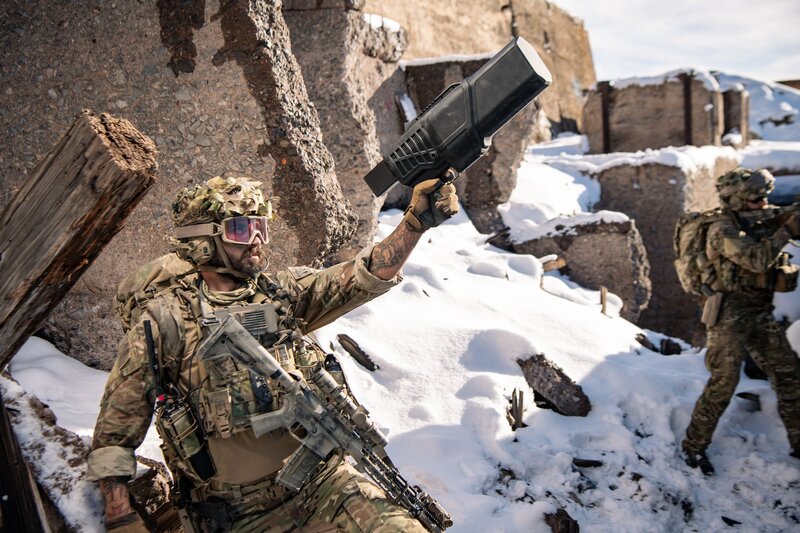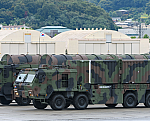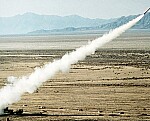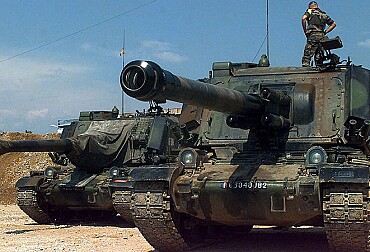Challenges and strategies in equipping military divisions with hand-held counter drone gear
In a rapidly evolving battlefield landscape marked by the proliferation of unmanned aerial vehicles (UAVs), the U.S. Army is prioritizing the deployment of hand-held counter-drone technology to bolster its defensive capabilities. However, as the Army aims to equip a division with these essential devices, experts caution that the anticipated costs and operational requirements might be higher than initially estimated.

The Army's proposed budget for 2025 earmarks $13.5 million for hand-held anti-drone devices, intended to outfit a division, alongside an allocation of $54.2 million for backpack-size jammers. These investments signify the military's recognition of the escalating threat posed by drones and the urgent need to enhance countermeasures.
According to an Army spokesperson, the $13.5 million allocation will facilitate the acquisition of various anti-drone devices, including 20 Modi systems, 10 Smart Shooter devices, 10 Bal Chatri units, and 20 Dronebuster systems. Each of these devices serves a unique purpose, ranging from signal detection to targeted jamming and interception of hostile drones.
However, Samuel Bendett, an expert at the Center for Naval Analysis, suggests that the Army's current plans might fall short of meeting operational demands. Bendett emphasizes the necessity of equipping not just divisions but also individual platoons with hand-held anti-drone devices, drawing insights from the ongoing conflict in Ukraine, where such technology has proven indispensable.
The hand-held devices encompass a diverse range of functionalities. While the Modi and Dronebuster operate as jamming systems to disrupt drone communications, the Bal Chatri specializes in detecting signals emitted by enemy drones. In contrast, the Smart Shooter serves as a precision rifle scope capable of swiftly neutralizing fast-moving aerial threats.
Previously, the 82nd Airborne and 1st Cavalry divisions received similar hand-held counter-drone devices, underscoring the Army's commitment to enhancing the drone defense capabilities across its units. However, the scale of distribution and training adequacy remain areas of concern, with only a fraction of personnel trained on the equipment.
Moreover, the Army seeks to bolster its air defense infrastructure by investing in larger counter-drone weapons systems. This includes procurement of additional jammers such as the Mobile-Low, Slow, Small Unmanned Aircraft Integrated Defeat System (M-LIDS) and the Fixed Site-Low, Slow, Small Unmanned Aircraft System Integrated Defeat System (FS-LIDS).
Furthermore, the Army's budget request encompasses allocations for systems designed to directly intercept and neutralize hostile drones. Notable among these are the Coyote drone interceptors, praised for their effectiveness in countering drone threats, and investments in directed-energy variants of the Maneuver Short Range Air Defense (M-SHORAD) vehicle.
The Ukrainian experience serves as a poignant reminder of the evolving nature of modern warfare and the critical role of counter-drone technology. Ukrainian forces have extensively utilized hand-held drone jammers and detectors, reflecting the imperative for a high density of anti-drone devices in conflict zones where drones are pervasive tools of engagement.
However, despite these efforts, challenges persist, exemplified by instances of Russian drones breaching Ukrainian defenses, underscoring the need for continuous innovation and adaptation in countering evolving threats.
In conclusion, the Army's endeavor to equip divisions with hand-held counter-drone gear represents a crucial step towards enhancing military readiness in an era defined by unmanned aerial threats. Nevertheless, the road ahead demands a comprehensive approach, encompassing not just procurement but also adequate training, operational integration, and ongoing technological innovation to stay ahead of adversaries in the dynamic landscape of modern warfare.








